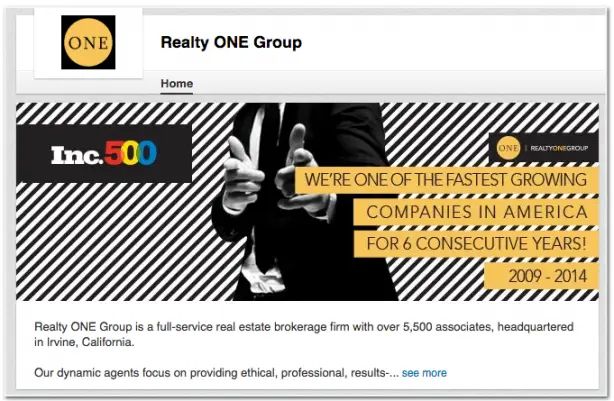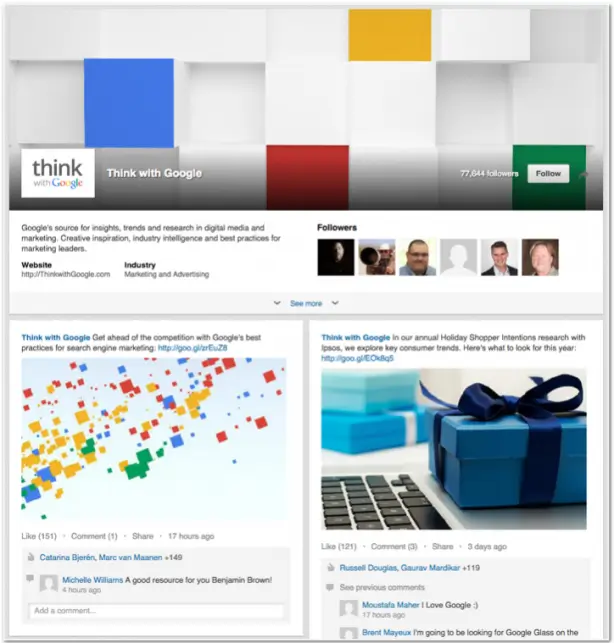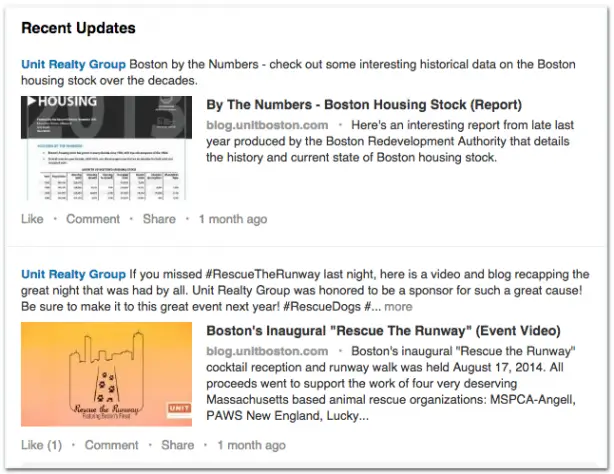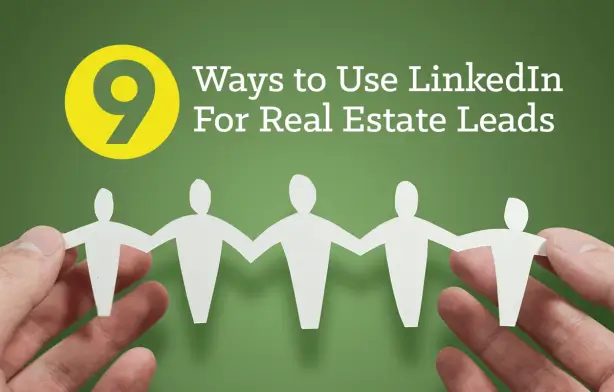You know the ins and outs of real estate marketing for Facebook. You tweet regularly to your many followers on Twitter. You even post on visual social networks like Pinterest and YouTube. But do you take advantage of all that LinkedIn has to offer?
The unofficial social network for professionals is actually an excellent real estate lead generation tool. Not convinced? Well, just look at the stats: Data compiled from more than 5,000 companies found LinkedIn produced 277 percent more leads than Facebook and Twitter. That’s not to say you shouldn’t use those platforms to generate real estate leads, but it does mean you need an active presence on LinkedIn.
There is more to LinkedIn than simply signing up for an account, though. Real estate lead generation on this platform requires effort. Luckily, we have nine expert real estate lead generation ideas for LinkedIn that can grow your contacts database.
Add in every last detail about your business on your Company Page.
Once you’ve signed up for a business account on LinkedIn, fill in all of the information about your company on your page, as you would for any other social network. This includes your real estate website URL, links to other social accounts, and your bio outlining your experience in real estate and the areas you specialize in (like selling certain types of homes or working in a certain price range). Did you work at other agencies or brokerages in the past? Do you have one or more Realtor certifications? Add those details as well.
Once all of your company info is added, create a professional-looking banner image for your Company Page header. Or, if you don’t have the creative chops, hire a designer to develop one for you. Regardless of how you get one, the important thing is getting one. Look below at Realty ONE Group’s header image, which showcases its ranking as one of the top-growing companies nationwide:

Your header image should include unique information about your business. Perhaps you had the highest sales volume at your agency in the past year, helped close the largest deal in your community, or have some amazing listings you’ve helped sell. Anything that separates you from the pack and makes your business look like the cream of the crop should be incorporated into your banner image. Even your real estate agent headshot with a text overlay featuring your contact information works well.
The more you can build your case that you’re a knowledgeable, experienced, hard-working real estate agent, the more likely a local lead searching LinkedIn for real estate representation will consider you.
Check out also: Don’t GoDaddy: Six Ways To Keep Your Site From Going Down

Make your Company Page stand out from those of other agents.
After filling in all of the essential info to your Company Page, think of ways to make optimize it further and make yours look distinct. One option is to add videos. Through the site’s Company Updates feature, you can add Vimeo and YouTube videos that appear on your Company Page homepage and in your followers’ homepage feeds. Additionally, the platform allows for SlideShare uploads too.
Any visual content you create (as long as it’s informative) can help your LinkedIn page. Just as photos, images, and graphics perform well on Pinterest, Instagram, and Facebook, LinkedIn provides another medium you can use to publish multimedia and advance your real estate social media marketing.
Develop a Showcase Page to relay even more business information.
There are different types of pages you can set up on LinkedIn for your business — Company Pages and Showcase Pages. The best way to understand them is this: The Company Page is to your real estate website what the Showcase Page is to your dedicated landing pages (like your real estate blog or your “about me” page). You can set up one or more Showcase Pages to promote your blog posts, promotional offers (e.g. referral programs, free buyer consultations), or any other pertinent information you want your audience to know.
Here’s an example of one of Google’s Showcase Pages for its digital marketing research platform Think with Google, which includes numerous posts linking back to its website:

Use the Advanced Search feature to find locals to connect with.
Advanced Search, a tool primarily used by job-hunters and companies hiring on LinkedIn, has other uses that can aid your real estate lead generation — notably, the ability to discover background information on current leads and to identify new prospects.
When you stumble upon people of interest, don’t hesitate to send them a personalized message. The key to earning their trust and not annoying them is being genuine and honest. Tell them you’re always looking to connect with locals who may be in the market. Consider asking questions about their own business or background if you find something intriguing about them. People love talking about themselves, so as long as you avoid overly sales-y messages, you could develop plenty of new relationships (a.k.a. real estate leads) via search.
A great feature many LinkedIn users employ to organize the connections they make is the tag tool. Click on the “Connections” tab at the top of your profile and scroll over any contact. You’ll notice a “Tag” feature that allows you to use keywords to label that connection. If they have little interest in your business, for example, you could write “Cold.” Conversely, if they seem very close to hiring an agent, tag them with a “Warm” label. Use whatever organizational system works best for you.
Join or create Groups to reach local community members.
Google+ and Facebook have countless niche groups that allow users with similar interests to easily interact with one another. Many LinkedIn users don’t realize the platform also has Groups that allow for such engagements. Search the site for real estate–related Groups to join. Some are private, meaning you need to be approved to join, while others are public and open to everyone.
Whichever Groups you join, be sure to include members of your target audience. Talking with fellow agents and consumers from across the country can help you build an online presence, but if you want to find bona fide real estate leads, look for Groups that include local community members.
“Create moments of inspiration that send people on a journey.”
— ANDREW DAVIS
Once you find these LinkedIn communities, research members to see if they fit the criteria you typically look for in clients. Oftentimes, you can find out LinkedIn members’ income levels and links to other social media accounts, which can give you insights into their personal lives, including if they’re in the market for a new home or ready to sell. Speak directly with these users, answer their questions, and gauge their interest in your representation. Subtlety is vital with these interactions, however: If you sell too hard, you’ll push away any potential leads.
If there aren’t any Groups where you think you could accrue more real estate leads, start your own. Make it specific to your general area (whether that’s your town, county, or state is up to you) and invite those you’ve found using Advanced Search to join, along with any current leads in your customer relationship management (CRM) database.
The benefits of starting a Group are many, but mostly, it provides you the opportunity to become a thought leader and go-to resource for nearby buyers and sellers.
Publish lots of interesting content — your own and others’.
Just like you do for your real estate blog and other social media accounts, posting a significant amount of content is essential to growing leads. Look at some of the best real estate agents and firms on LinkedIn and you’ll notice a trend: They all post content of varying types — links to blog posts, opinion pieces, newsjack articles, and curated pieces. Here are a couple examples of updates to Boston-based Unit Realty Group’s Company Page: one a curated piece on recent housing market data, the other a promotional post on an event the firm sponsored:

A required precursor to posting blog content on your LinkedIn page is, of course, learning to blog (and well). But once you have your real estate blogging routine down pat, publish each piece on your Company Page. Having said that, it’s also optimal to find great content from other industry resources and link to them. As with all major social channels, it’s ideal to show your audience you’re willing to go above and beyond to find information that can help them.
Add social sharing plug-ins to your Company Page to drive traffic.
Having social sharing buttons on your real estate website and in your email marketing expands the impact of your content in a huge way. LinkedIn offers its users a social share button that makes it a cinch for users to share content with their networks. With this code added into your Company Page, your followers can easily spread your content with their followers and increase traffic to your profile and real estate website. Be sure to add a LinkedIn share button to your personal website as well to make it simple for visitors to share your posts to LinkedIn.
Take advantage of the Sponsored Updates feature to expand your reach.
Another option to maximize your LinkedIn presence is to use Sponsored Updates, a feature that’s helped brands small and large target their content to specific segments of their audiences. Direct Sponsored Updates, for instance, allow you to personalize your content to certain groups within your audience (based on demographic information that you outline before sharing your content).
Then, there are ads on the site, for both small and large businesses. Assuming you don’t have the ad budget of a national brokerage (not many successful real estate agents and firms do, so don’t fret), check out LinkedIn’s small business advertising options to see which work best for your strategy and ad spend.
Look over your LinkedIn analytics to determine what is and isn’t working.
Anything and everything you do on your Company and Showcase Pages is thankfully compiled into data by LinkedIn. Use the site’s analytics tools to discover links, clicks, impressions, and interactions with your posts, and determine which content and ads helped you gain more followers. Figure out the trends for your LinkedIn account and alter your real estate marketing efforts on the platform as needed. For instance, increase the amount of times you post a link to a certain blog post if the analytics tell you it garners tons of impressions and engagement. Just as you do with Google Analytics, examine your LinkedIn metrics carefully so you can generate more and more real estate leads each month.





